In the dynamic world of fitness and wellness, yoga balls have emerged as a multifunctional tool, transcending their traditional use in yoga studios. As 2024 unfolds, these versatile spheres are finding their place not just in fitness regimes but also in therapeutic settings, modern offices, and even in educational environments. Known variably as stability balls, balance balls, or exercise balls, they offer a unique combination of fitness challenge and therapeutic support. Their ability to enhance core strength, improve posture, and provide a dynamic platform for a range of exercises makes them a valuable asset in various sectors. The adaptability of yoga balls to diverse user needs marks them as a significant product in the evolving landscape of health and wellness equipment.
Table of Contents:
1. Diverse types and applications of yoga balls
2. Analyzing the 2024 yoga ball market
3. Key considerations for selecting yoga balls
4. Leading yoga ball models and their features
5. Concluding insights
Diverse types and applications of yoga balls
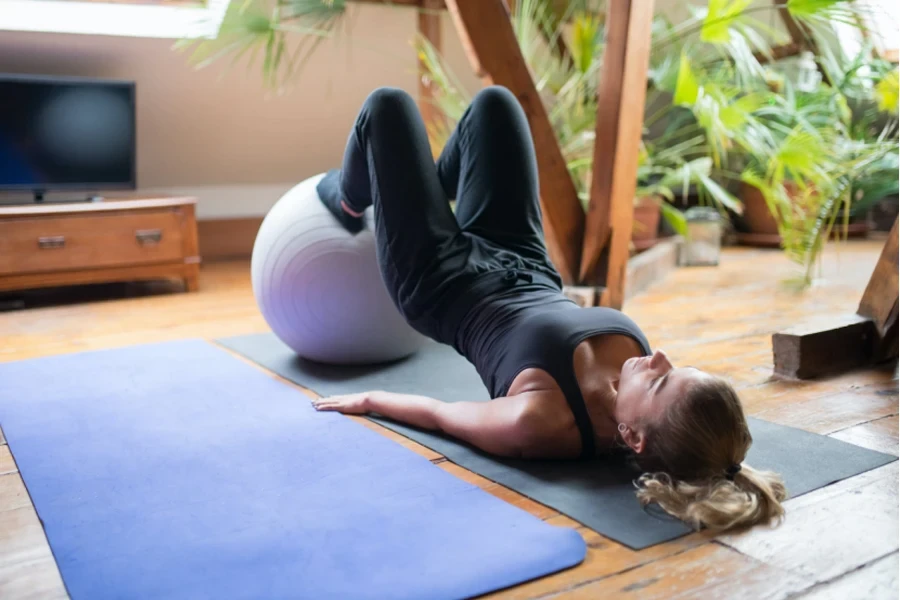
The landscape of yoga balls in 2024 is characterized by a diverse array of types and applications, each tailored to specific needs and environments. This variety reflects an evolving understanding of how these tools can enhance physical wellness and ergonomic support.
Exploring different yoga ball varieties
The variety of yoga balls available is extensive, each type serving a distinct purpose. Stability balls, known for their robust construction, are a mainstay in gyms and fitness centers. They support a wide range of exercises, from core strengthening routines to balance training, making them versatile tools for fitness enthusiasts. Balance balls, while similar in appearance, are designed with a focus on improving posture and coordination. These are particularly beneficial in rehabilitative settings, aiding individuals in regaining balance and control post-injury. Therapy balls, characterized by their softer texture, are tailored for therapeutic exercises. They play a crucial role in rehabilitation, aiding in recovery and providing gentle support for various physical therapies. In the realm of office ergonomics, office balls have emerged as dynamic seating options. These balls encourage active sitting, which is pivotal in promoting better posture and core muscle engagement, countering the sedentary nature of modern work environments.
Multifaceted uses of yoga balls
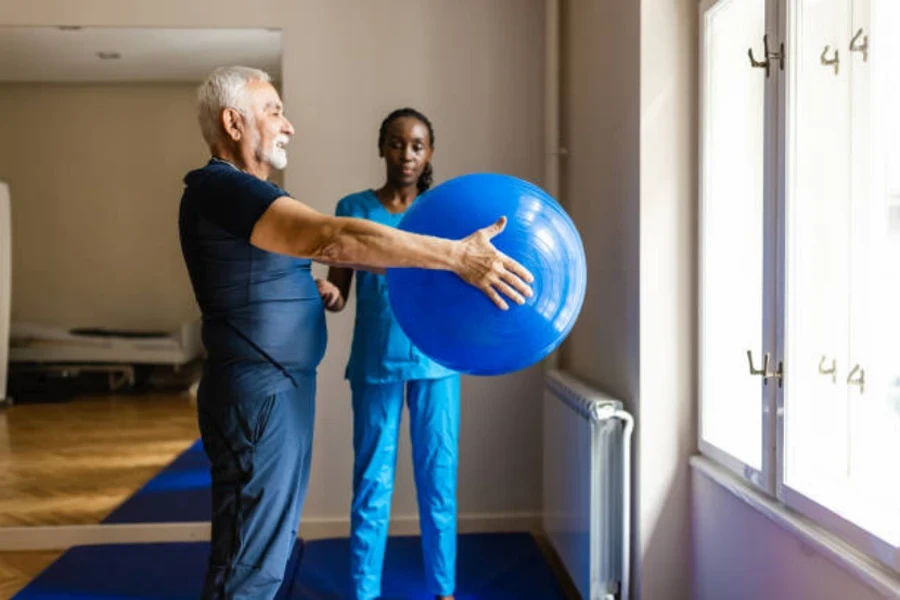
The applications of yoga balls are diverse and far-reaching. In the fitness sector, they are instrumental in enhancing core strength, flexibility, and overall balance. The dynamic nature of these balls introduces a unique challenge to muscles, making them a favored tool among personal trainers and fitness enthusiasts. In therapeutic settings, yoga balls offer invaluable support in the rehabilitation of injuries. They aid in improving motor skills and provide a supportive medium for various physical therapy exercises. Beyond physical therapy, yoga balls contribute significantly to mental wellness. They offer a unique way to relieve stress and promote relaxation, making them a versatile tool in both physical and mental health practices. In office environments, the introduction of yoga balls as an alternative to traditional seating is a notable trend. This shift towards ergonomic wellness highlights the adaptability of yoga balls to various user needs, promoting active sitting and better posture. Additionally, in educational settings, yoga balls are being increasingly used to aid concentration and physical health among students. They offer a dynamic seating option that promotes better focus and engagement, enhancing the learning experience.
The expanding applications of yoga balls, driven by a deeper understanding of their benefits and the development of specialized designs, are not just a fleeting trend. They reflect a broader shift towards holistic wellness, where tools like yoga balls play a pivotal role in enhancing physical and mental health across different sectors.
Analyzing the 2024 yoga ball market
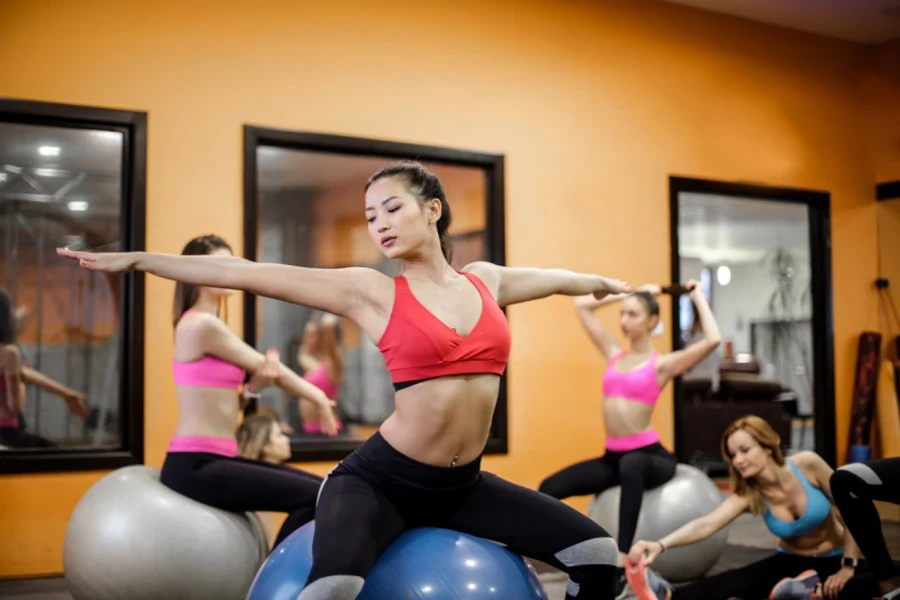
The yoga ball market in 2024 is a dynamic and rapidly evolving segment, reflecting broader trends in the global yoga industry. This growth is driven by an increasing focus on holistic well-being and the rising popularity of yoga practices.
Current market trends and consumer preferences
In 2024, the global yoga market, which includes yoga balls, is experiencing significant growth, with a projected market value of USD 115.43 billion. This expansion is fueled by a compound annual growth rate (CAGR) of 9%, indicating a robust and upward trajectory. The market’s growth is influenced by various factors, including the rising popularity of yoga practices and an increasing focus on holistic well-being. The Asia Pacific region, led by India, dominates the global yoga industry, with a rich yogic culture and a large number of yoga schools driving the market. In North America, the popularity of yoga and the sales of yoga equipment, including yoga balls, are increasing through both offline and online channels. The demand for yoga exercises has surged, especially with the outbreak of COVID-19, as people sought to maintain fitness and mental health while confined to their homes.
Impact of technological advancements
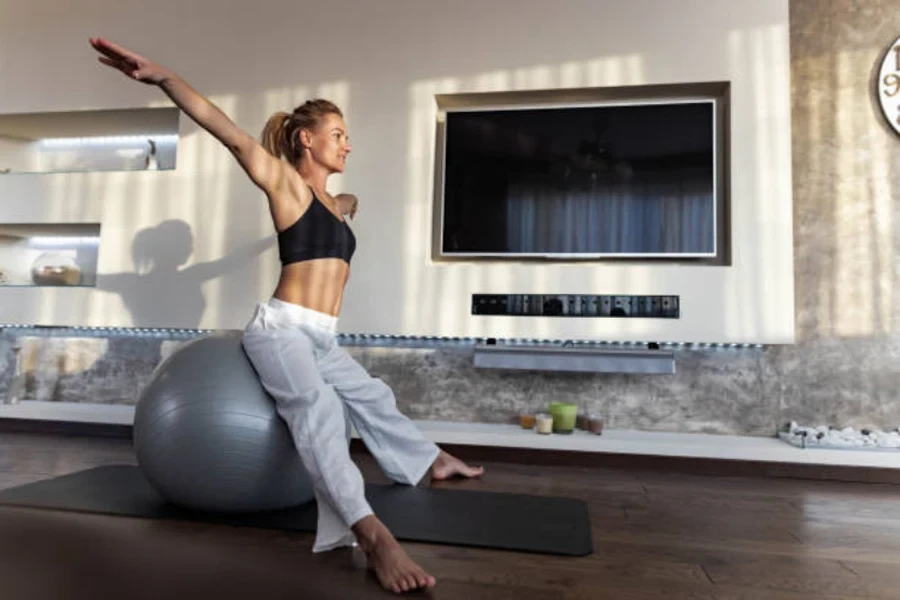
Technological advancements are significantly shaping the yoga ball market. The shift towards online yoga courses, accelerated by the COVID-19 pandemic, has opened new avenues for the yoga industry. This transition to digital platforms has led to the emergence of various online yoga platforms that are convenient and accessible, contributing to the growth of the online yoga segment. The demand for high-quality, interactive virtual yoga content is on the rise, transforming the industry rapidly. In Europe, there is a growing interest in home workouts, including yoga, pilates, and bodyweight exercises, further fueling the expansion of online yoga classes. This trend indicates a broader shift in consumer preferences towards digital solutions in the yoga industry, including the use of yoga balls in virtual classes and training programs.
The global yoga market, including the segment of yoga balls, is experiencing a surge in demand due to the increasing awareness of health and wellness programs. The market is propelled by factors such as the health benefits of yoga, celebrity endorsements, supportive government initiatives, and the designation of International Yoga Day. Yoga’s health benefits, such as improved immunity and mental stress relief, have led to its growing popularity worldwide. The market is expected to continue growing, with yoga being practiced in various settings, including homes, gyms, and yoga studios. Key industry players are contributing to this growth through capacity expansions, mergers, and acquisitions, further bolstering the market’s development.
Key considerations for selecting yoga balls
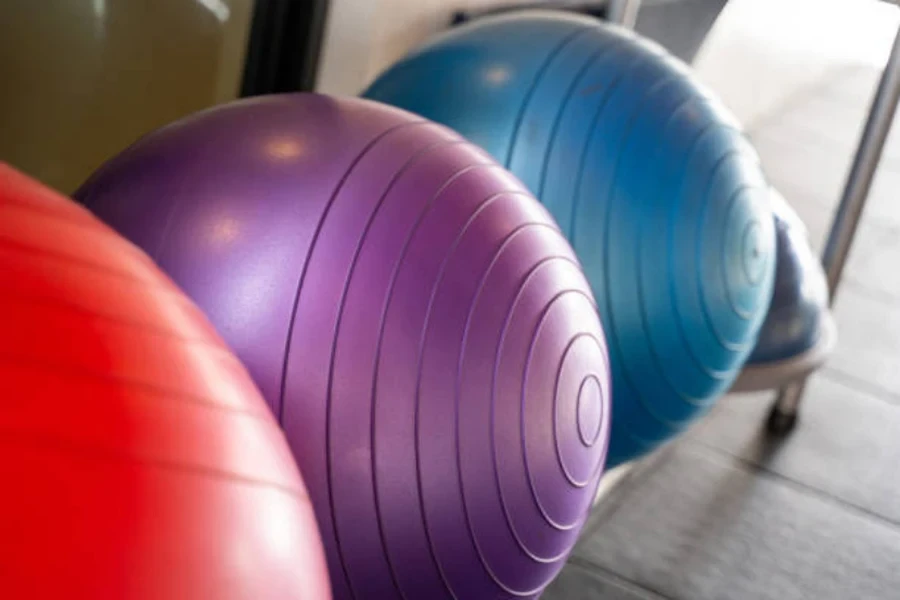
Selecting the right yoga balls for various applications requires a nuanced understanding of their quality, durability, and suitability for different user groups. This selection process is crucial for ensuring that the products meet the diverse needs of users while maintaining high standards of safety and effectiveness.
Assessing quality and durability
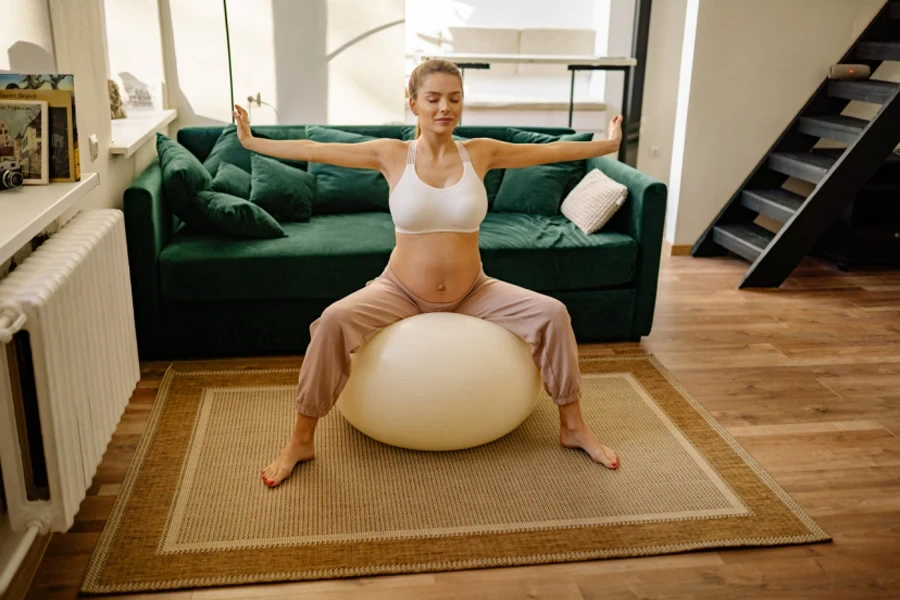
When selecting yoga balls, understanding the nuances of quality and durability is crucial. The primary material used in the construction of most yoga balls is polyvinyl chloride (PVC), known for its soft, elastic properties. This material choice is pivotal as it determines the ball’s ability to withstand pressure and maintain shape under varying weights and exercises. The quality of PVC used can vary, with professional-grade, anti-burst PVC being the gold standard. This type of PVC ensures that the ball can endure significant stress without rupturing, a critical safety aspect for users.
The thickness of the PVC material is another key factor. Typically measured in millimeters, the thickness can range from 0.5mm to 2mm. A thicker ball, around 1.5mm to 2mm, offers greater durability and is more resistant to punctures and wear, making it suitable for heavier or more intense use. Conversely, thinner balls might be more appropriate for lighter exercises but may not withstand rigorous or heavy-duty use.
The construction quality, particularly the seam of the ball, is also a vital consideration. Seamless construction or well-reinforced seams prevent air leaks and enhance the ball’s longevity. Additionally, the surface texture of the ball contributes to its overall quality. A non-slip surface is preferable for safety and performance, especially in environments where sweat or moisture is present.
In terms of longevity, higher-quality balls offer extended lifespans, reducing the need for frequent replacements. This durability is not only cost-effective but also environmentally friendly, as it minimizes waste. When assessing the quality and durability of yoga balls, it is essential to consider these factors to ensure a safe and long-lasting product.
Size and suitability for different users
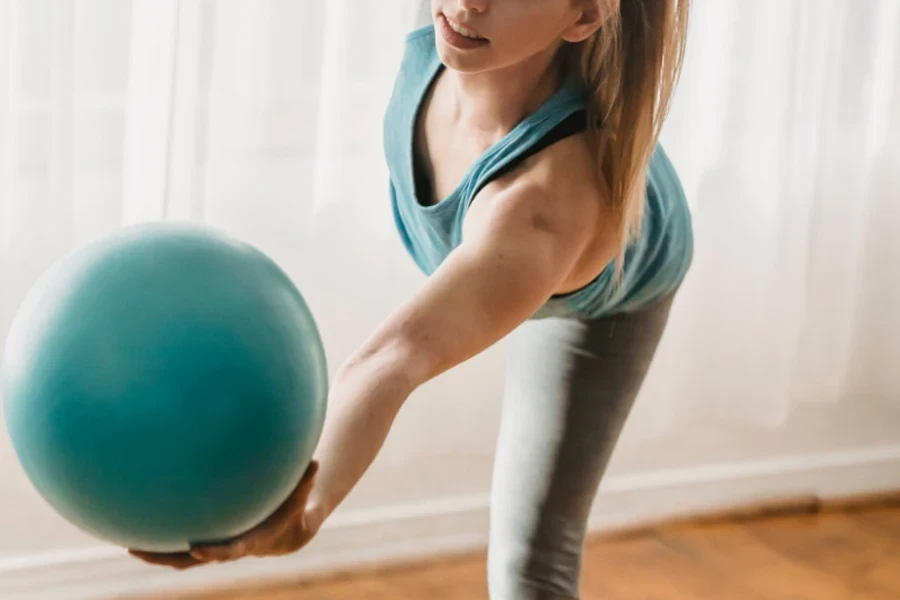
Selecting the appropriate size of a yoga ball is crucial for its effectiveness and the comfort of the user. The size of the ball should be directly proportional to the user’s height. For instance, a ball with a diameter of 55 cm is suitable for individuals who are 150 to 160 cm tall, while a 65 cm diameter ball fits those who are 160 to 165 cm tall. For users taller than 175 cm, an 85 cm ball is recommended. These size guidelines ensure that when seated on the ball, the user’s feet are flat on the ground, and their knees are bent at a 90-degree angle, maintaining proper posture and balance.
For users with specific needs, such as back problems or longer legs, or for those planning to engage in stretching and yoga exercises, a larger ball is advisable. This provides additional support and stability, especially for stretching exercises. Conversely, smaller balls, although more challenging to balance, offer greater control and are recommended for beginners or for exercises requiring more precision.
In office settings, where yoga balls are used as chair replacements, the ball’s size should complement the desk height. For a standard desk height of 74 to 76 cm, a ball that is 10 cm higher than the chair is ideal, as the ball will slightly deflate when sat upon. This ensures that the user maintains an ergonomic posture while sitting.
The firmness of the ball also plays a role in its suitability. A harder ball can support more challenging exercises, while a softer ball might be more comfortable for sitting or therapeutic use. Before finalizing a choice, it is advisable to try balls of different sizes and firmness to find the best fit for the intended use.
In summary, the selection of a yoga ball’s size and firmness should be based on the user’s height, intended use, and comfort requirements. This careful consideration ensures the yoga ball provides the maximum benefit and support for the user’s specific needs.
Leading yoga ball models and their features

In 2024, the yoga ball market is characterized by a range of innovative models from leading brands, each offering unique features to cater to diverse fitness and wellness needs.
Review of top yoga ball brands in 2024
In 2024, the yoga ball market showcases a variety of brands, each with unique features and designs catering to different needs and preferences.
Vivora Luno Exercise Ball: Distinguished by its PVC inner ball encased in a washable felt cover, the Vivora Luno offers a luxurious feel and aesthetic appeal. Available in standard (65 cm) and max (75 cm) sizes, it supports up to 400 pounds, making it versatile for both exercise and ergonomic seating. The felt cover not only enhances comfort but also integrates seamlessly into home or office decor. Its handle for easy carrying adds to its practicality.
BalanceFrom Anti-Burst and Slip-Resistant Exercise Ball: Known for its affordability and durability, this model is designed to withstand up to 2,000 pounds of pressure. It comes in a wide range of sizes (S to XXL) and colors, catering to diverse user heights and preferences. The anti-burst feature and non-slip surface make it a reliable choice for both clinical and home use.

Theraband Pro Series Stability Ball: This model stands out for its durability and is a top choice among fitness professionals. Available in color-coded sizes (45 cm to 75 cm), it has a weight capacity of 1,000 pounds. Made from thick PVC, it is designed to deflate slowly if punctured, ensuring safety during use. It also includes an instructional exercise poster, adding value for users.
Trideer Exercise Ball Chair: Ideal for beginners or those seeking extra stability, this ball comes with a ring base for added support. Available in L (58 to 65 cm) and XL (68 to 75 cm) sizes, it has a weight capacity of 330 pounds. The ring base feature makes it suitable for office use or for individuals with balance issues.
Bender Ball for Pilates and Barre: This mini ball, ideal for Pilates or barre workouts, can be inflated up to 9 inches. Despite its small size, it can withstand a weight of up to 300 pounds. Its tacky surface and pliability make it easy to grip and hold, suitable for targeted muscle work.
Each of these models offers unique features, from luxury and aesthetic appeal to durability and specialized use, catering to a wide range of users in the yoga ball market of 2024.
Comparative analysis of best models
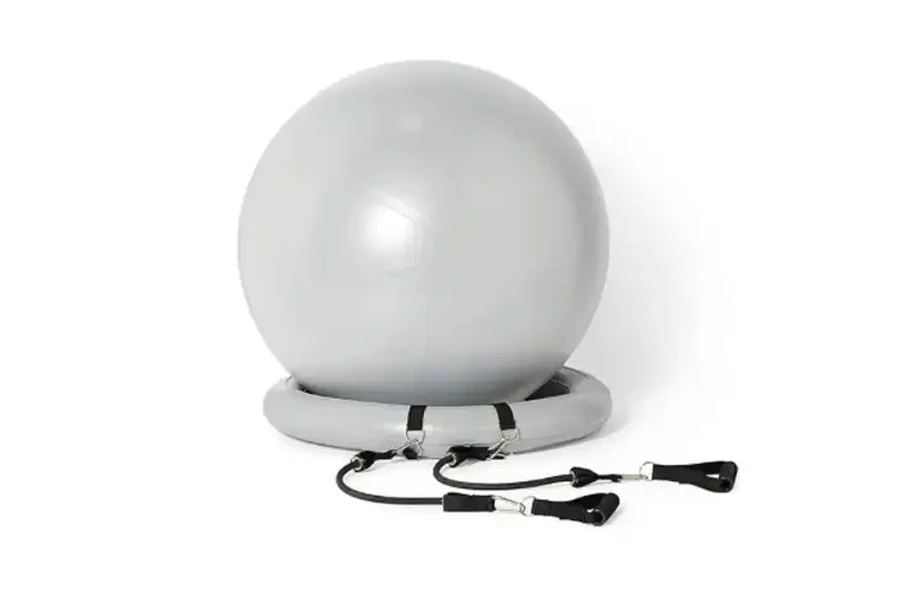
In 2024, the yoga ball market features several standout models, each with unique characteristics. A comparative analysis based on different features and usage scenarios reveals the strengths and ideal applications of these top models.
Durability and material quality:
Theraband Pro Series: Known for its exceptional durability, this model is ideal for gym or physiotherapist’s office settings. Its thicker walls and superior material quality make it a long-lasting choice. However, it requires a laborious inflation procedure and does not come with a pump.
BalanceFrom Anti-Burst: Offers good durability at a more affordable price. It’s quick and easy to inflate and has fewer reports of bursting compared to competitors. However, it’s softer and may not be as supportive for prolonged sitting or intense workouts.
Comfort and aesthetics for office use:
Vivora Luno: Stands out for its aesthetic appeal and comfort, especially in office settings. The felt cover provides insulation and a more professional look, making it suitable for desk work. However, it’s on the pricier side and the external seams might be uncomfortable against bare skin.
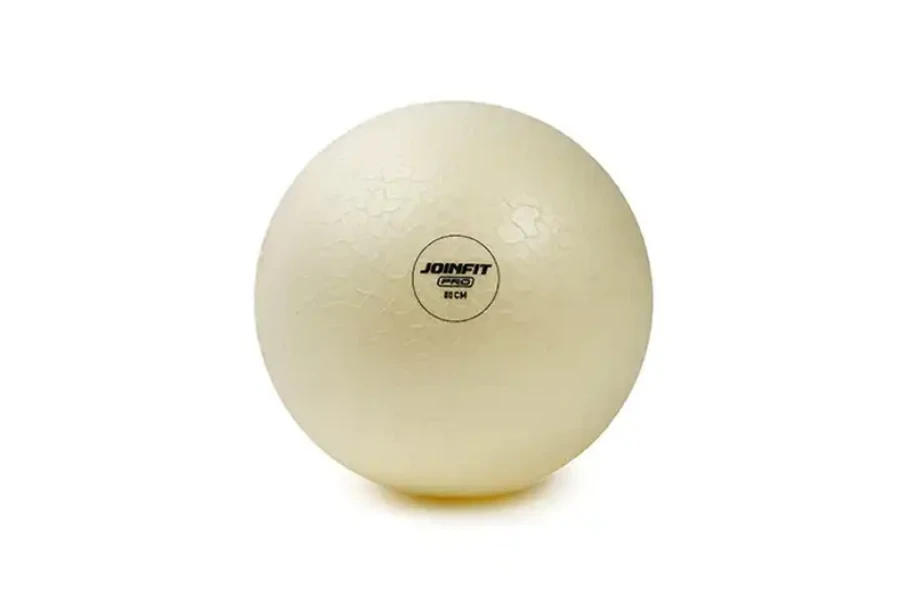
Supportiveness and stability for beginners:
Trideer Exercise Ball Chair: Offers added stability with its ring base, making it a great choice for beginners or those using it as an office chair. It’s supportive but has a lower weight capacity compared to other brands.
Size and inflation:
Bender Ball for Pilates and Barre: Its smaller size (6 to 9 inches) is perfect for Pilates or barre workouts where a larger ball might be cumbersome. However, the inflation straws can be difficult to use.
Versatility and user-friendliness:
GalSports Anti-Burst Yoga Ball: Easy to inflate and great for sitting applications like stretching and mobility exercises. It’s supportive for sitting and checking posture during long sessions at the computer. The included foot pump is a bonus, though it may be too delicate for many inflations.
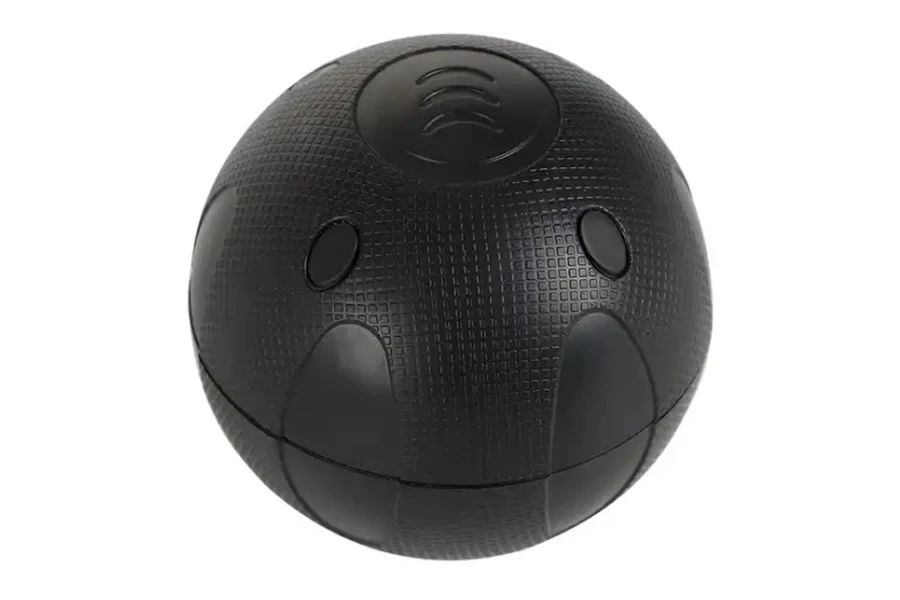
In summary, each of these yoga balls caters to specific needs and scenarios. The Theraband Pro Series excels in durability and material quality, making it ideal for rigorous workouts. The Vivora Luno is perfect for office environments, offering comfort and a professional look. The Trideer Exercise Ball Chair provides stability and support for beginners, while the Bender Ball is suited for specialized workouts like Pilates. Lastly, the GalSports Anti-Burst Yoga Ball offers versatility and ease of use, ideal for casual users and home workouts.
Concluding insights
The selection of yoga balls for online retail offerings in 2024 hinges on understanding diverse user needs, from durability and material quality to comfort and aesthetics. Models like the Theraband Pro Series and BalanceFrom Anti-Burst cater to those seeking robust workout tools, while the Vivora Luno excels in office environments. For beginners and specialized workouts, the Trideer Exercise Ball Chair and Bender Ball offer tailored solutions. Ultimately, the choice of yoga balls should align with the specific requirements of different user groups, ensuring a range that is both versatile and tailored to the evolving fitness and wellness landscape.




